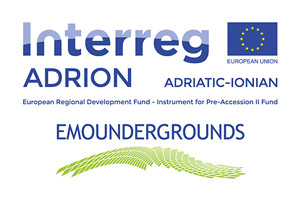A TYPICAL LUNCH IN CARPI
The starting point are the first courses made with rigorously hand-made pasta; meat stuffed tortellini, tortelloni filled with herbs or pumpkin, maccheroni al pettine ( it is a small device with tensioned string lines used to line pasta).
Then it is the moment of roast meat, boiled meat, pork cotechino and zampone served mainly during the winter period, then mixed salads with aromatic herbs and dressed with Traditional Balsamic Vinegar of Modena.
At the end of the meal there are spoon desserts and traditional baked cakes: zuppa inglese, tagliatelle cake, bensone, fruit tarts and jams.
DOC Lambrusco wines, in particular Lambrusco Salamino di Santa Croce originating in the Carpi territory, complete these special taste experiences.
Listen to ithe audioguide
TYPICAL PRODUCTS
Mostarda “fina” from Carpi, with a long and complex processing, is a spicy sweet sauce used with meat, in particular boiled, cotechino and zampone or with cheese. Anyway, there is not a single original recipe of “fina” mustard but different recipes connected to the various families who produce it. Undoubtedly, the cultivation of the typical apples and pear ( as Gagliardine and Decime apples) contributed to the creation of the recipe that included also orange peels, candied citron, raisins, mustard, honey and other spices, ingredients that are common in all the various families’ recipes, along with other ones connected to the personal tastes or “ secret ingredients”. But the real Mostarda Sopraffina from Carpi was the secret recipe of Sebellini Family who used to have a grocery in Carpi: producers preserve it, nowadays as in the past, in inverted pear-shaped clay jars . It is prepared in winter and, for this reason, it was a usual gift for Christmas festivities.
The IGT Pear of Emilia-Romagna is typical for the entire region, European cradle for the pears production. Here the 70% of the Italian pears is cultivated. In particular the areas which have been recognized from the Protected Geographical Indication are the provinces of Modena, Ferrara, Bologna, Reggio Emilia and Ravenna. The IGP labelled peas are only the ones cultivated according to a specific production protocol, aimed at intensifying the quality and health requirements. It is an integrated production in respect of the environment and the consumer’s health; they are picked only when they have reached a certain stage of ripening; they can be commercialized only when they have reached a specific sugar content.
Parmigiano Reggiano DOP, typical product of the territory, comes out from the happy marriage between human work and local ingredients: among these the milk, made special by the fodder eaten by the cows producing it, coming from pastures in Emilia and Lombardy below Po
DOC Lambrusco wines whose origins are prestigious and ancient -since the wine variety was already known by Ligurian Gauls- is produced in three varieties in the province of Modena: Sorbara Lambrusco, Lambrusco Salamino di Santa Croce (this name refers to the area of Santa Croce in Carpi), the Lambrusco Grasparossa di Castelvetro
Traditional Balsamic Vinegar of Modena DOP represents one of the most ancient and appreciated food traditions of the territory and it has become one of the most precious among the typical products of the Italian agro-food industry. It is characterized by scents and flavours expertly balanced between sweet and sour, by the brown, full and bright colour, and by the syrupy consistency. Made from the spontaneous transformation of the cooked grape must (coming from autochthonous grapes from Modena province), matured by slow acetification by ageing for a long time in series of different vases, the Balsamic Vinegar comes out from the mixture of men’s mastery, tradition of centuries and nature action.
The Municipal Vinegar The Municipal Vinegar Loft is located in the attic of Palazzo Scacchetti, municipal residence, and it is composed of 3 sets of precious barrels, called Maria Beatrice, Caterina and Adelaide and 2 mother barrels. The sets house from 6 to 8 barrels which are made of different woods (oak, chestnut, ash, false acacia, cherry) and have different sizes. The Vinegar loft is managed by the Carpi community of the Consorteria dell’ABTM di Spilamberto, and the vinegar yearly produced is used by the Municipal administration as gift for the important guests of the city, or also in the tasting courses.
The Municipal Vinegar loft can be visited on the second Saturday of every month from 9.30 to 12.30.
IGP Cotechino and Zampone are two widely consumed second courses of the Modena traditional cuisine, mainly during Christmas festivities. Pork trotters are stuffed with finely-minced pork meat. They are usually sided by lentils. The zampone was born in Mirandola where, according to the legend, during the terrible siege of Pope Giulio II in 1510-11, in order to withstand hardships and not to leave animals so laboriously fattened for the enemy, a cook of the Pio family had the idea of mincing pork meat and stuffing it into trotters. The history of cured meat production is very old. As far back as Celts and Romans there was the habit of preserving meat in salt. This method was used to preserve the product during military campaigns.
DOP Modena ham is obtained exclusively using hind legs from pigs born and reared in Italy according to the strict rules of the Production Regulations
Listen to the audioguide
----------------------------




